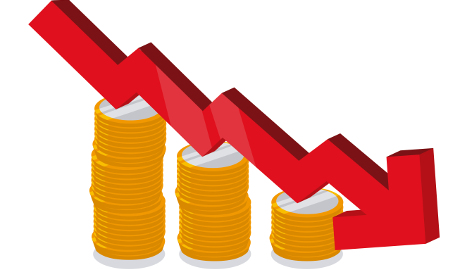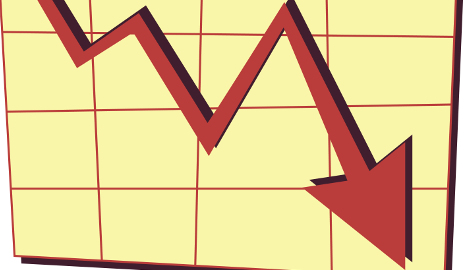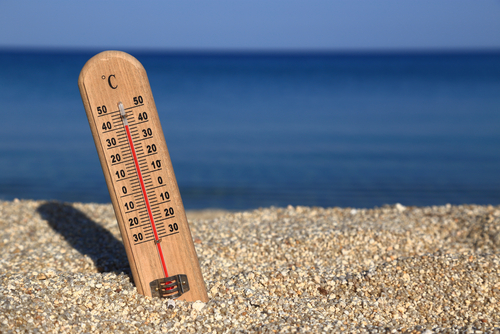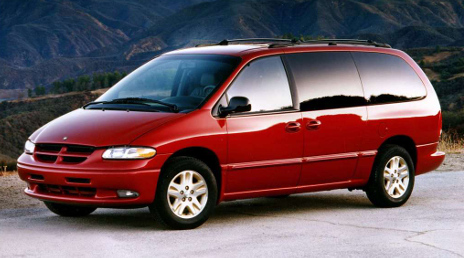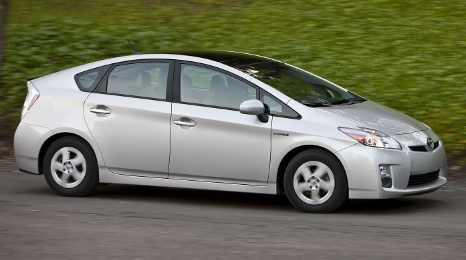Though wholesale prices remain elevated from 2014 rates, according to one reading, prices at auction took a dip for the first time this year in Canada.
The ADESA Canada Used Vehicle Price Index, powered by ALG, fell in September, after being adjusted for seasonality. Auction prices, on average, fell by 0.6 percent from August. This marks the first time this year the index has dropped at all.
Geoff Helby, ALG Canada regional director, reported that price movements this past month were nearly all negative. The only segment to see a prices increase was the midsize SUV category, with prices rising by $58 or 0.4 percent.
The compact SUVs “declined most rapidly,” Helby pointed out, with prices dropping by 12.6 percent or $1,777.
This segment was followed by the minivans, with prices dropping by 7.7 percent or $781 in September.
Midsize cars (down 7.1 percent or $628), mid-compact cars (down 3.8 percent or $292) and full-size pickups (down 2.3 percent or $515) all saw significant declines, as well.
New-vehicle sales continued to surge this past month, posting “yet another record month,” Helby said. This trend bodes well for used supply in coming years as some of these new sales come back through remarketing channels as trade-ins.
New sales last month increased by 3.7 percent year-over-year, reaching a total of 174,337 sales. Year-to-date, overall sales are up 2.5 percent, coming to a total of 1,461,132 vehicles sold.
“Yet another record month with September sales surpassing last year’s mark by a total of 6,296 units,” said Helby. “For the month, overall passenger car sales fell by 6.2 percent to 62,980 units, while light truck sales of 111,357 units, increased by a substantial 10.4 percent.”
Sales continue to reflect a shifting consumer interest in Canada away from cars and minivans, moving toward trucks and SUVs.
In a recent interview with Tom Kontos, executive vice president and chief client officer at ADESA Analytical Services, the analyst highlighted this trend in detail.
“New-vehicle sales in Canada in the last couple of years have been highly skewed toward trucks, primarily SUVs, whereas Canada historically has been much more concentrated in cars and minivans … And that sort of wave that the U.S. has been through for many years now, and now the CUVs, too, seem to be pretty popular in both countries, too,” Kontos said. “So the composition of what we are seeing at auction is starting to reflect the growth in popularity a few years back of SUVs and crossovers.”
After prices rose more than expected at auctions in July — up by 0.5 percent from June — rates in the lanes continue to rise as we approach fall.
Last month, price movement was once again “more positive than expected seasonally,” reported Geoff Helby, ALG Canada regional director.
According to the ADESA Canada Used Vehicle Price Index, powered by ALG, after being adjusted for seasonality, wholesale prices rose by an average of 0.4 percent in August from July rates.
Price movements by segment were mixed last month, Helby pointed out.
Compact SUVs saw an impressive jump in prices, with rates rising by 9.3 percent or $1,208.
They were followed by fullsize pickups, which continue to increase in popularity among Canadian consumers. Full-size pickups saw prices rise by 4.1 percent last month or $875.
Midsize cars and minivans also saw prices rise, by 3.5 percent (or $302) and 3.0 percent (or $298), respectively.
Highlighting the segments with the highest depreciation rates in August, prices from midsize SUVs declines at the quickest rate, Helby reported, with prices dropping by 5.7 percent or $909.
Mid-compact cars also took a hit, dropping in price by 1.9 percent or $147.
Taking a look at how new-car sales faired for the month, Helby reported in his analysis that light-duty vehicle sales for the month increased by 2.2 percent year-over-year to 175,512.
“This marks the best August result ever, surpassing last year’s mark of 171,703 units. This unexpected performance pushed the SAAR up to an incredible 1.94 million units,” said Helby.
And trucks continue to fly off the lots, with new sales ramping up by 10 percent in August. On the other hand, passenger car sales fell by 8.9 percent.
Year-to-date, overall new sales are up 2.3 percent to a total of 1,286,795 vehicles sold.
OMVIC announced today the beginning of its four-week campaign to spread awareness of all-in price advertising for car buyers in Ontario.
Terry O’Keefe, OMVIC’s director of communications and education, says there is a surprisingly low amount of awareness of the policy in the region.
“Only 29 percent of Ontarians know that if they see a dealer’s advertised price for a vehicle, that price must include all fees and charges the dealer intends to collect,” O’Keefe said. “This campaign is designed to further educate and inform, because better-educated consumers are better-protected consumers.”
As illustrated in the above video advertisement, OMVIC’s campaign message is “all-in pricing – it’s putting the fun and excitement back into buying a car … and, it’s the law!” OMVIC’s campaign includes online, radio and TV advertising across the entire province of Ontario, including all major television networks such as CBC, CityTV, CTV and Global.
O’Keefe, long an advocate for the policy, continues to explain the Ontarian policy as simply as possible.
“There should be no additional hidden fees or added surprise costs, with the exception of HST and licensing,” O’Keefe said.
For a complete explanation on Ontario’s all-in pricing protection legislation, check out OMVIC’s site here.
Prices at auction were on the way up in July — more so than expected on a seasonal basis.
That’s according to the ADESA Canada Used Vehicle Price Index, powered by ALG, which after being updated for July showed an average wholesale price increase of 0.5 percent from June.
"Price movements by segment were mixed in July, but more positive than expected seasonality,” said ALG Canada regional director Geoff Helby in the report.
Midsize SUVs saw prices rise the most last month, with rates up 6.1 percent of $910 from June rates.
Up next were the minivans, which saw prices rise by 0.1 percent or $14, according to the Index.
On the other hand, midsize cars saw prices in the lanes drop the most dramatically. This segment saw rates fall by 5.8 percent or $526 month-over-month.
The mid-compact cars also experienced a significant decline, with prices falling by 5.1 percent or $424 last month.
Interestingly, though truck prices have held strong for most of 2015, prices began to drop for some last month. Full-size pickups experienced a decline of 0.4 percent or $79 at auction in July.
Helby also reported prices for compact SUVs were essentially unchanged, increasing by just $3.
The average ramp up in used prices last month occurred amid rising new-vehicle sales.
According to the report, new-vehicle sales increased by 0.4 percent year-over-year in July, “representing the best July on record,” Helby pointed out.
And year-to-date, overall sales are up 2.3 percent year-over-year, coming to a total of 1,111,283 new vehicles sold.
New truck sales were on the way up last month, increasing by 8.2 percent to 111,067 units sold, but car sales didn’t see the same success.
According to the report, passenger car sales fell by 10.3 percent in July to 66,777 units.
“Year to date, light trucks represent 60.5 percent percent of total sales compared to 57.8 percent the same period last year,” Helby said, highlighting the growing market for trucks in Canada.
Wholesale price movement this past month didn’t follow the expected seasonal trends in the lanes, instead spiking by almost 1 percent.
The ADESA Canada Used Vehicle Price Index, powered by ALG, has been updated and shows the index rose after being adjusted for seasonality.
Specifically, auction prices increased by an average of 0.8 percent from May rates.
Geoff Helby, ALG Canada regional director, said in his commentary on the index that price movements by segment were “mixed in June, but more positive than expected seasonality.”
Midsize cars saw prices rise at a rapid pace, with prices spiking up by 3 percent, or $261, to end the month with an average transaction price of $9,017.
This segment was joined by the full-size pickups, which have been outperforming the market in regards to price retention for most of the year. The full-size pickups also saw rates rise by 3 percent, or $622. In June, the average price of a full-size pickup at auction was $21,424.
Mid-compact cars also saw prices rise more than the average last month, with a 1.8-percent ($151) increase, ending the month with an average transaction price of $8,433 at auction. They were followed by compact SUVs, which saw rates rise by 1.1 percent ($140). By the end of June, the average transaction price for compact SUVs was $12,877.
On the other hand, Helby reported that minivans saw prices drop at the most rapid pace, declining by 1.7 percent, or $168. Minivans ended the month with a average price of $9,828.
This segment was followed by the midsize SUVs with a drop of 1.3 percent ($191), ending June with an average rate of $14,972.
Helby also pointed out new-vehicle sales continue to soar in June, boding well for future used supply as trade-ins come pouring in.
New-vehicle sales for June increase 1.2 percent year-over-year, with 177,857 sales.
Last month, truck sales ramped up by 11.5 percent for a total of 109,400 sales. This is no news to the industry, as trucks have become increasingly popular in Canada.
On the other hand, passenger car sales fell by 11.7 percent in June, coming in at a total of 68,457 units in June.
“The month of June was the strongest June in history and capped an exceptionally strong spring selling season and a robust first half for vehicle sales in Canada,” said Helby.
Year-to-date, new-vehicle sales are up by 2.7 percent, coming to a total of 933,439 vehicles sold.
Though used prices were still on the way up in May as summer neared, according to RVI data, analysts are still predicting a slow downturn in auction prices — potentially causing some relief for dealers and buyers in the lanes — to begin shortly.
According to RVI’s Q2 Risk Outlook, after adjusting for MSRP, used vehicle prices in May rose by 1.2 percent from April. This represents a 2.1 percent increase year-over-year.
“Real used vehicles prices increased in May, but we expect a softening in residual values over the next several years,” RVI analysts reported.
According to the report, most all segments RVI tracks saw auction prices increase in May, with midsize sedans leading the spikes for the higher volume segments.
Midsize sedan prices rose by 10.6 percent in May when compared to April and 7.8 percent year-over-year.
That said, according to RVI’s price index forecasting, this same segment is predicted to see rates drop by 2.2 percent by the end of the year from current levels.
Another segment touting an impressive increase in rates were the luxury full-size sedans, which saw prices rise by a whopping 22.4 percent from April and 24.5 percent year-over-year.
And the same goes for this segment — rates are not expected to stay elevated. By the end of the year, RVI predicts the luxury full-size sedan segment to see a 1.5 percent decline in price from current levels.
And though most all segments saw prices rise by at least 1 percent, there were a few outliers.
For example, the full-size van segment saw prices fall the most with a 16.5-percent decline from April and a 3.5 percent drop year-over-year.
RVI predicts prices for this segment will drop by 0.2 percent from current levels and end the year 10.6 percent lower than December 2014.
The luxury coupe segment also performed poorly with rates dropping by 10.5 percent when compared to April and 2.3 percent year-over-year. This segment is predicted to see prices rise by 2 percent from current levels by the end of the year, but rates are expected to finish 2015 1.9 percent lower than the year before.
And though prices remain high today, over the next five years, RVI expects a “softening” in used-vehicles prices throughout Canada.
This is expected to be spurred as the currently tight supply of used vehicles is expected to ramp up by 2019.
RVI predicts that by 2018, the industry can expect prices by have fallen by 2.8 percent from current levels.
“The major factor in this decrease in prices is the increase in the supply of used vehicles in Canada. The RVI Used Vehicle Stock Index is expected to rise on a yearly basis through 2019,” RVI analysts said.
Wholesale prices are still way above pre-recession rates due to short supply, but seasonality may provide some relief for dealers this summer looking to stock up on inventory.
Car and truck segments across the board took a depreciation hit in May.
This is “in line with expected seasonality,” said Geoff Helby, ALG Canada regional director, in his commentary on the ADESA Canada Used Vehicle Price Index movement for May.
The Index was unchanged from May after being adjusted for seasonality, Helby said, but all price movements by segment were negative in May.
Midsize cars declined at the fastest rate, Helby reported; in May, prices for this segment were down 10 percent, or $975. At the end of the month, the average asking price for a midsize car at auction was $8,756.
This segment was followed by minivans with a 6.6-percent (or $705) decline to rest at an average price of $9,995, according to the ADESA Index.
Compact SUVs also took a bit hit, falling in price by 5.9 percent (or $794). The average price at auction for a compact SUV in May was $12,737. Next up were midsize SUVs (down 1.8 percent or $270), mid-compact cars (down 0.8 percent or $65) and full-size pickups (down 0.3 percent or $60), respectively.
Trucks continue to perform better when it comes to price retention than there smaller counterparts.
The Manheim Canada Used Vehicle Value Index reflected this same trend.
The Manheim Index was down 2 points from April to rest at 111.4. And all segment categories showed negative price movement with the exception of pickups, which went up nearly five points on the Index.
The compact car category saw the biggest drop, falling 8.1 points on the Manheim Index.
Next up were vans and SUVs, which both saw a 2.2-point decline. Sports cars (down 1.8 points), luxury cars (down 1.8 points), full-size cars (down 1.1 points) and midsize cars (0.9 points) also experienced price depreciation last month.
June Residual Update
As for how used prices are faring this month, Auto Remarketing Canada took a look at value retention date for four-year-old vehicles from Canadian Black Book.
And it seems May trends are sticking around as weather warms up, with the larger models outperforming the car segments.
For example, full-size pickups and small pickups, as well as the full-size luxury SUVs are holding their value the best out of all segments this month. Full-size pickups are retaining 50.3 percent, while small pickups are retaining 50 percent of their value. And full-size luxury SUVs were ahead of the pack, with a 52.9 percent retention rate.
The next in line are the compact luxury SUVs (48.9 percent) and midsize luxury SUVs (49.5 percent).
On the other end of the spectrum, the full-size car segment is seeing the most depreciation this month, retaining only 33.7 percent of its value.
Also performing poorly this month are the subcompact cars (39.9 percent), midsize cars (39.8 percent), premium luxury cars (39.9 percent) and luxury cars (39.2 percent).
Wholesale prices were on the way up in February, with analysts reporting price spikes across the board for all segments, even as the Canadian economy was feeling the impact of depreciation on the Canadian dollar.
The Manheim Canada February used-vehicle price index was up 8.8 points from January and remains up 7.7 points year-over-year.
And after being updated through February and adjusted for seasonality, the ADESA Canada Used Vehicle Price Index, powered by ALG, rose by 0.3 percent from January rate.
According to the Manheim index, the largest price spikes were seen in the full-size car segment, which was up 35.9 points, and the sports car segment, which saw a 26-point increase.
Taking a look at price movement according to the ADESA Index, Geoff Helby, Canada regional director of partner development at ALG, reported price movements were all positive in February.
Compact SUVs rose at the fasted rate, Helby said, with a 3.7 percent or $471 increase. They were followed by the midsize cars with a 2.8 percent or $260 price spike.
Full-size pickups also saw rates hike, with prices in the lanes spiking 2.7 percent or $559, perhaps not surprising considering the winter weather February brought with it.
Midsize SUV prices rose by 1.6 percent or $274, followed by the minivans, which saw prices rise by 1.5 percent or $150. Lastly, mid compact cars saw prices rise by 1.2 percent or $108, according to the ADESA index.
Though used-car prices fell slightly last month and most vehicle segments saw month-over-month declines, minivans continued to see impressive price increases.
According to the latest RVI Market Update, the RVI Used-Vehicle Price Index fell by 4 percent from December, while minivans saw an 8-percent rise in residual values during the same time period.
This was the greatest price increase last month out of the high volume vehicle segments, with minivans prices rising 8 percent from December for and up 5.6 percent year-over-year.
The sporty coupe segment also saw an impressive price spike with an 11.9-percent increase from December, followed by the luxury full-size sedan segment, up by 11.4 percent.
The midsize SUVs also performed better than the overall market, touting a 2.7-percent price increase from December and a 7.6-percent rise from the same period of 2014.
The said, the report shared that overall, prices trended downward last month, with full-size pickups and SUVs seeing declines from December, while gas prices dropped for the seventh straight month.
Even as gas prices fell to 93 cents per liter, down from $1.05 per liter in December, full-size pickup prices and full-size SUV rates both fell by 12.3 percent from December.
The full-size sedan segment also saw residuals fall significantly in January, with price dropping by 16.8 percent from December.
Earlier this month, reports from Manheim and ADESA Canada showed price declines in the lanes as 2015 got underway, as well.
Based on numbers provided by the two companies, there appear to be very slight shifts in overall pricing as Manheim has reported a 0.3-percent decrease in its January index, while ADESA Canada reported a 0.3-percent month-over-month increase in overall wholesale prices in January.
As gas prices continue to drop, so are pricetags on more fuel-efficient used vehicles.
And after falling slightly over the course of the end of 2014, overall used-price drops are expected to escalate as the industry kicks off into the new year and supply begins to expand.
That's according to ALG’s latest Industry Report, which predicts prices will drop by 0.5 percent over the course of January and February.
Geoff Helby, Canada regional director, partner development at ALG, reported, this price movement is much less negative than rates seen during this time last year, when residual declines came in at 1.3 percent.
That said, supply is expanding, and it’s beginning to have an impact on used prices — as many dealers may be waiting for used prices to drop in the lanes.
“Used market supply is forecasted to rise in aggregate; on average this brings residuals down by -0.02 percent, though impacts by segment range from -0.3 percent to +0.4 percent,” Helby said.
Supply movement is expected to impact most segments, though the results are varied.
“The subcompact utility segment displays the largest negative impact, at -0.3 percent, whereas microcars show the largest positive impact of 0.4 percent,” Helby said.
Also playing a role in price movement has been the swiftly dropping fuel prices at the pump.
“Falling gas prices had a negative impact on fuel-efficient segments, while inefficient segments rose,” Helby said, highlighting a trend seen over the course of this past November and December.
Much of the same is expected this time around, as oil rates continue to drop.
Over the course of this month and February, prices for subcompact prices are expected to drop by 1.1 percent, marking the largest predicted decline this time around.
The compact segment, another segment known for its fuel-efficiency, is predicted to follow with a decline of 0.8 percent, Helby reported.
The midsize cars wrap up the three segments expected to see larger-than-average residual declines, with a 0.7-percent drop.
On the other hand, the premium sport segment is expected to see a 0.2-percent increase in price as we inch closer toward warmer months.
Lastly, the premium performance segment and the premium subcompact segment are expected to stay consistent with rates seen in late 2014.

